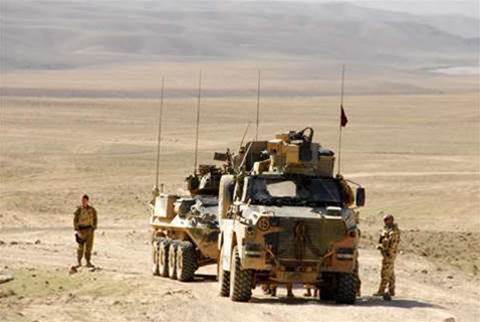The Department of Defence is planning to “fundamentally reset” its enterprise mobility capability in a bid to untether 76,000 deployed and non-deployed personnel from fixed IT hardware.

The department revealed plans for the massive uplift of enterprise mobility this week to create a “flexible and efficient work environment” across both its fixed and deployed environments.
The planned uplift will form part of the department's broader mobility and digitisation project, codenamed ICT2203, which is slated to begin in mid-2025 and continue over the next 20 years.
It will establish a “foundational enterprise mobility capability up to the protected information domain”, giving staff access to the “the right information at the time needed while on the move”.
“There is a transformative opportunity to fundamentally reset how, when and where work is done in Defence,” the department said in a request for information (RFI).
“With mobile technology revolutionising ways of working across industries and governments, Defence can leverage this technology to untether its workforce from fixed ICT and uplift and expand on its currently limited and disparate mobile solutions.”
Defence said such a transformation would enhance the user experience for its 76,000 personnel across the Navy, Army, Air Force and Australian Public Service, to enable a “people-centric capability that provides seamless mobile workflows”.
While the department's workforce is highly mobile, it currently remains “heavily reliant on using fixed ICT hardware”, including in the office, warehouse environments, on Defence bases or in deployed environments.
“Personnel often struggle to collaborate and communicate with their teams when working remotely, due to the current mobile technologies in Defence being ineffective in supporting the full suite of activities personnel need to perform in their roles,” the RFI states.
“The limited scale and functionality of CIOG’s [Defence's CIO Group's] existing mobile device offerings, slow device procurement and provisioning, and delivery and assurance of new applications, have meant that meeting urgent and rapidly emerging requirements for mobile solutions is very challenging."
This was highlighted earlier this year when “an unprecedented number of personnel” were forced to work from home during the coronavirus pandemic, which only “accelerated the adoption of work arrangements at Defence”.
But “without an enterprise approach to govern, develop, and sustain mobile capability” that extends to all 76,000 personnel, Defence said it will “continue to have a tethered workforce that relies on overly manual, paper-based, offline and fixed desktop-based processes”.
RFI documents show ICT2203 will consist of five core components, including a new inventory of “standardised mobile devices” that CIOG will trial with users to inform future device provisioning.
Devices will be supplied to the workforce - which has been separated into three mobility personas: the knowledge worker, war fighter, and task worker - using a "role-base and tailored provisioning model, which is not a 'one size fits all' approach.
Another of the core components will see Defence extend its “mobile application management and mobile device management platform into the official and official: sensitive domains”.
This component will also involve establishing new mobile solutions for accessing content management platforms up to the protected domain, as well as a new secure email gateway and endpoint protection solution
An “enterprise mobile application development platforms” component will introduce a number of development tools and environments, including “new tools for mobile applications, supporting application programming interfaces (APIs) and back-end development”.
Other components - which are business-led changes supported by IT driven changes - include “process improvements in key mobility functions of CIOG” and resources to support a “governance and management function”.
“In the future state, personnel will have easy access to information across devices, applications and systems, and this timely access to information will enable personnel to take action through effective and efficient command and control within and beyond the mobile information environment,” Defence said.
“Personnel will also have access to official and protected systems across Defence-issued and personal devices so they can complete work and make contact with people internally and externally to Defence.
“Fast, reliable and consistent access to systems is a fundamental component in the future state, especially for personnel in remote locations with low to no connectivity.”
Defence is planning to use the RFI to explore industry’s ability to deliver the new enterprise mobility capability through “a number of smaller innovations as well as through more holistic models”.
It will then undertake one or more future market approaches over the next two years to further refine its requirements.
While the project is yet to receive first pass approval, Defence has obtained gate zero investment committee approval late last year and has since been refining its requirements.
First pass approval is expected in Q3 2021, following the preparation of a gate one business case, which it plans to bring forward to the investment committee in Q2 2021.
The RFI closes on September 28.


_(20).jpg&h=140&w=231&c=1&s=0)
_(22).jpg&h=140&w=231&c=1&s=0)

.png&h=140&w=231&c=1&s=0)



_(26).jpg&w=100&c=1&s=0)

 iTnews Executive Retreat - Security Leaders Edition
iTnews Executive Retreat - Security Leaders Edition












_(1).jpg&h=140&w=231&c=1&s=0)



